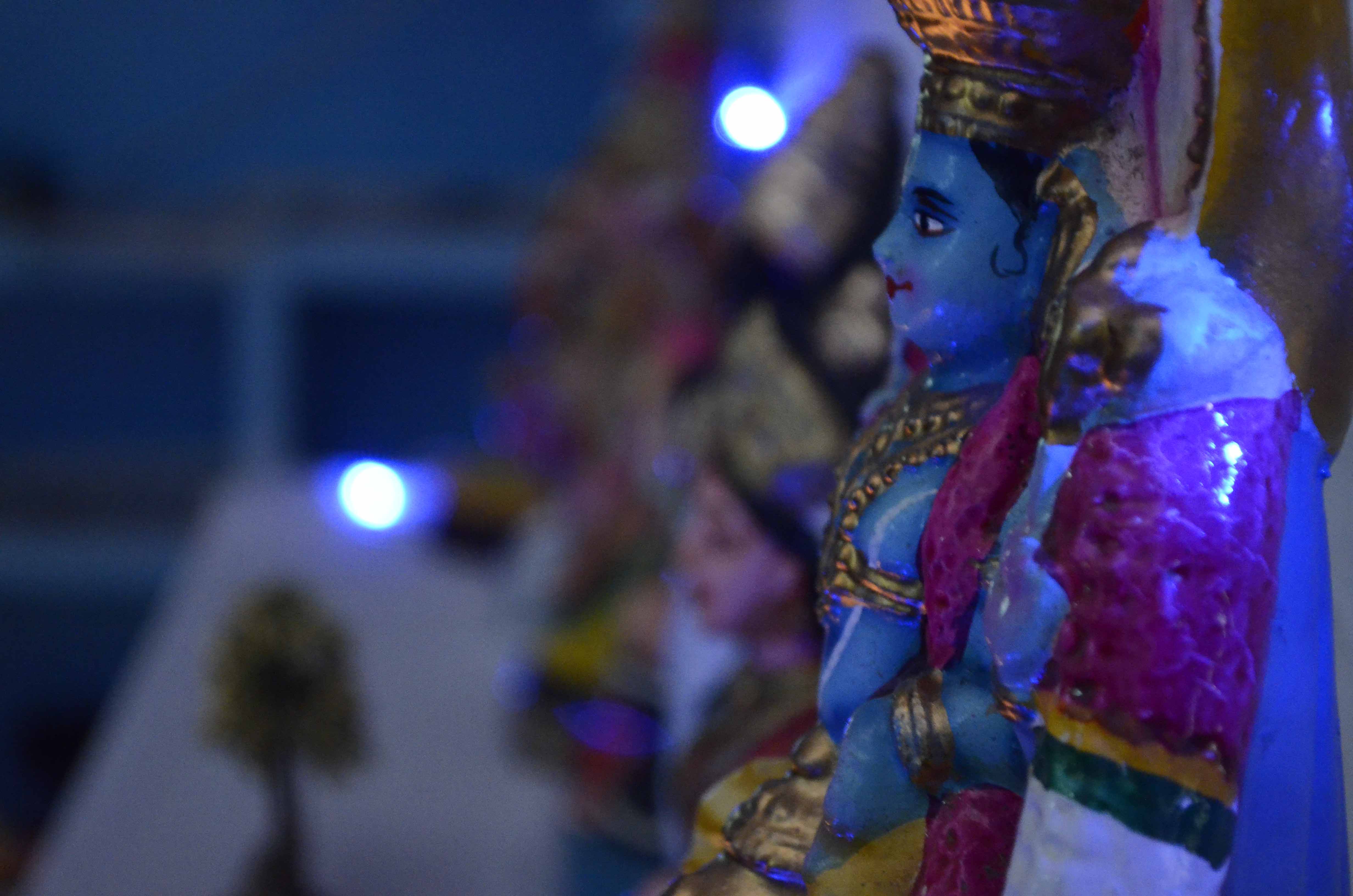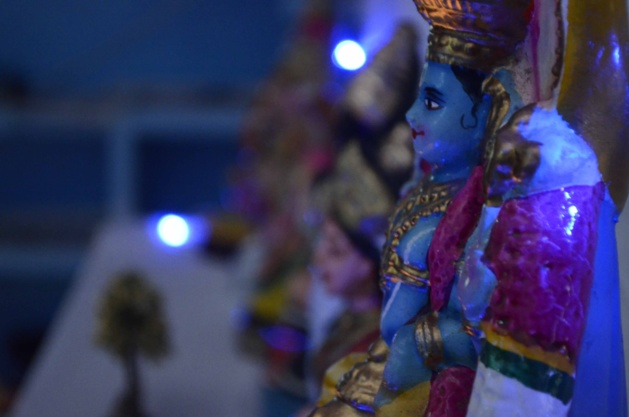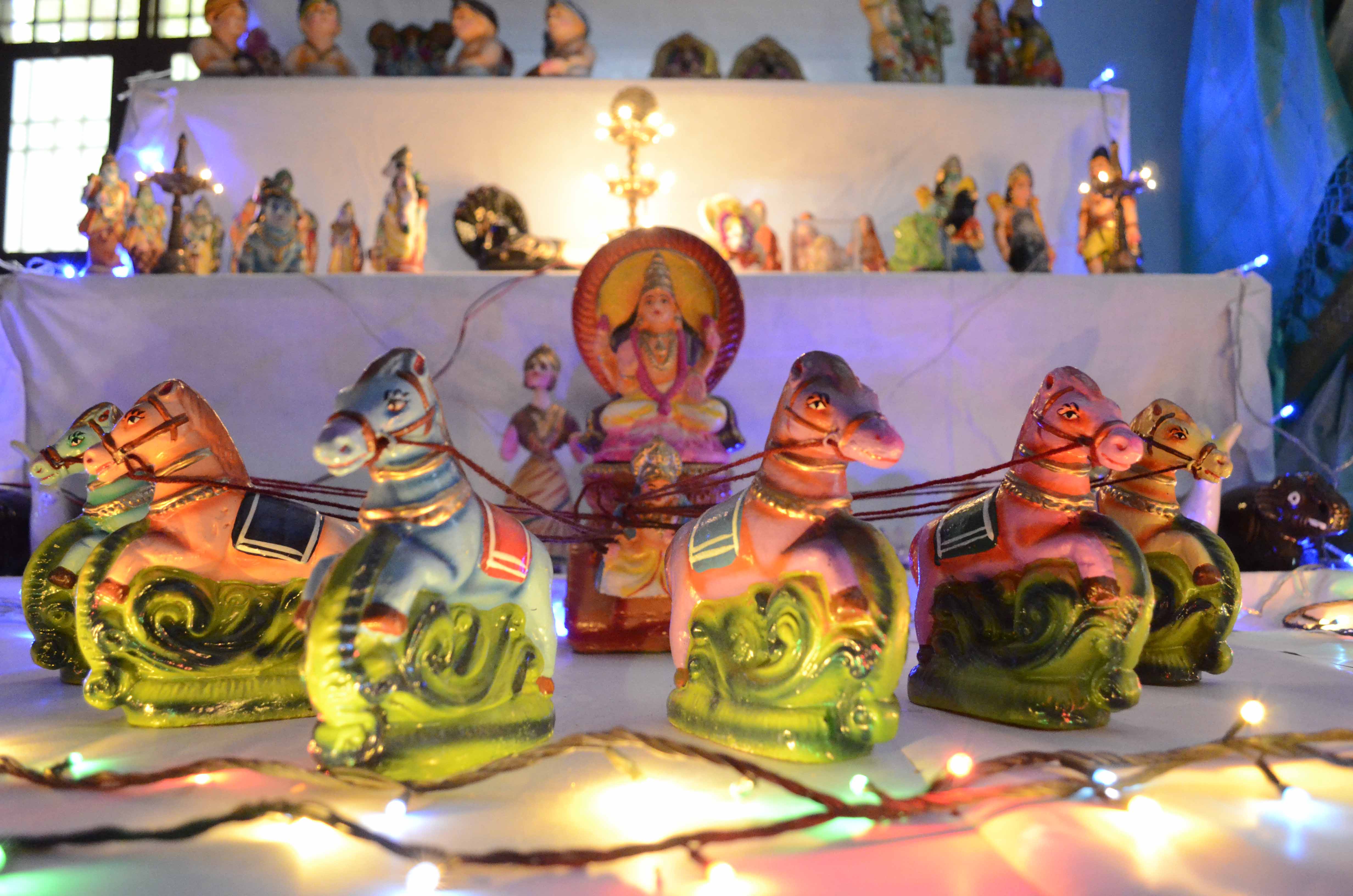This festival celebrates good triumphing over evil. The most popularly reason for commemorating is the defeat of Ravana of Lanka by Rama. According to the story of Ramayana, Rama is an incarnation of Lord Vishnu, the Preserver. Ravana, the King of Lanka kidnaps Rama’s wife Sita After hearing about Sita's beauty - Rama's wife - Ravana, the King Of Lanka, kidnaps he. Rama then indulges in a campaign to defeat Ravana and claim back his abducted wife. This whole story of Ramayana is one of the epic stories of India.
Celebrations all around the country
One of the most famous celebratios in Dussehra must be Durga Puja. Celebrated extensively by Bengalis, it falls on the last day of Dussehra. The entire state of West Bengal leaps into a festive mood. Idols of Goddess Durga are worshipped and, at the end of celebrations, are traditionally immersed into water. In South India, these 10 days of Dussehra celebrations are spectacular. Dolls made of clay are arranged in houses and intricately decorated, usually with a theme. Friends and relatives are invited to the houses and many people sing devotional songs.
Worship, knowledge and work
The ninth day of the festival is a day of worshipping Saraswati (the goddess of knowledge). Books and educational materials are arranged while a silk saree is draped around to give the form of the Goddess’s body. The face is then placed on top of it and the goddess is decorated with all sorts of gold ornaments, giving the appearance of Her Divine presence. During the same day, people also worship their work instruments and vehicles. It is a belief that people, whatever the job they do, have a fresh start from this ninth day of Dussehra. The last day of Dussehra, known as Viajadashami is celebrated with equal joy as the rest of the days.
However, at the end of this day, the beautiful and artistic arrangements of the dolls are removed and kept away until the next year’s Dussehra. There is a conception that, every year, apart from the collection of dolls that one has, a new doll has to be brought into the collection. Thus, children have a fun time buying the doll of their choice. Many say the best time to buy dolls at cheap price is after a few days of the actual festival, all the traders would be glad to give good discounts.
However, at the end of this day, the beautiful and artistic arrangements of the dolls are removed and kept away until the next year’s Dussehra. There is a conception that, every year, apart from the collection of dolls that one has, a new doll has to be brought into the collection. Thus, children have a fun time buying the doll of their choice. Many say the best time to buy dolls at cheap price is after a few days of the actual festival, all the traders would be glad to give good discounts.
One festival, many beliefs
In the Northern part of India, the festival celebrates the defeat of Ravana against Rama. In a few other places it celebrates the killing of a demon, Mahishasura, who is said to have the powers to convert into the form of a buffalo at will, in the hands of Goddess Shakti. The word Shakti means power in Sanskrit. Durga Puja in West Bengal is celebrated for the same reason as quoted for Shakti.
Burning effigy of Ravana
There is one other famous event that can be witnessed if one travels to India during Dussehra. Since most part of India celebrate this festival to mark the defeat of Ravana against Rama, many pilgrim destinations dramatize the killing of Ravana. A person with an arrow with a burning flame shoots it onto an effigy made in the form of Ravana. This replica would be made of fire-crackers and would start bursting once the arrow with flame strikes it, which symbolizes the killing of Ravana. Places of importance celebrate it in larger and grander style while thousands of people throng these pilgrim spots to witness this event.
Though there are various reasons attributed to the celebration of Dussehra, the bottom line remains that celebration sprawls all around the country. The celebration as a whole celebrates the defeat of evil in the hands of good. Apart from this, it reiterates that India is a nation where Unity and Diversity are closed concepts.
Though there are various reasons attributed to the celebration of Dussehra, the bottom line remains that celebration sprawls all around the country. The celebration as a whole celebrates the defeat of evil in the hands of good. Apart from this, it reiterates that India is a nation where Unity and Diversity are closed concepts.
































